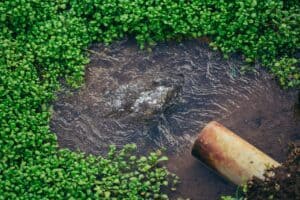Groundwater is our planet’s invaluable natural store of freshwater but it is woefully neglected.

Fast-depleting groundwater sources must be protected worldwide
Photo: Pixabay/distelAPPArath
Though water is central to our everyday lives and indeed life itself, we often mark World Water Day on March 22 not by reminding ourselves of all that water brings, but of the consequences of its absence or contamination.
As the American polymath Benjamin Franklin noted, “when the well runs dry, we (shall) know the worth of water”. This direct reference to groundwater, the water flowing through the pores and cracks in rocks beneath our feet, is fitting as the theme of this year’s water day is Groundwater: Making the Invisible, Visible.
Groundwater is our planet’s invaluable natural store of freshwater but it is woefully neglected. It differs from the water running off into rivers, lakes and wetlands as this underground flow derives from precipitation that occurred years, decades or even millennia ago.
Much of the estimated 23 million km³ of groundwater in the upper 2 km of the Earth’s crust is ancient. Yet even the shallower and more easily accessible water, part which has been replenished by rain over the past half century, still greatly exceeds all other unfrozen water on Earth.
Found throughout landscapes on all continents, groundwater plays a vital role in not only sustaining water-dependent ecosystems during period of low or absent rainfall, but also providing people with access to safe water, especially off-grid communities.
In drylands that stretch across around 40% of the world, groundwater is often the only perennial source of freshwater. It is estimated that half of the world’s drinking water and a quarter of all the water used in irrigation are currently sourced by groundwater drawn from wells and springs.
Groundwater flowing within rocks underground known as aquifers is generally more resilient to climate variability and change than surface waters. Therefore droughts – whose frequency and severity are amplified by global warming – often increase dependence upon groundwater.
This was recently witnessed in Cape Town in South Africa, which narrowly avoided “day zero” when the municipal water supply would be turned off. It has even been argued that human evolution itself relied on continuous spring discharges during periods of extreme drought.
The world is expected to become more dependent upon fresh water stored as groundwater as societies adapt to a world in which rain falls less frequently but in heavier bursts brought about by climate change. Recent evidence suggests such changes in rainfall may favour groundwater replenishment in the tropics to cope with drier periods, and that irrigation with groundwater could address climate change threats to rain-fed agriculture.
Exploited and contaminated
Despite groundwater’s invaluable attributes, it is not immune to overexploitation or contamination. For instance, continued groundwater pumping in some of the world’s most productive food-growing regions – California’s Central Valley, the North China Plain, northwest India, the High Plains of the US – is rapidly depleting reserves.

Similarly, some of the world’s fastest growing cities such as Dhaka (Bangladesh) and Nairobi (Kenya) are struggling to reliably provide safe water as the groundwater below is running out. Groundwater depletion in both contexts disproportionately affects lower-income households and farmers who are typically less able to engage in a “race to the bottom” and drill deeper wells.
Groundwater in coastal areas is also becoming more salty, thanks to intensive pumping and rising sea levels, which both serve to drive sea water into underground aquifers. This salinisation especially affects groundwater in low-lying nations across the world and has the potential to force millions of people to leave their homes.
Use of groundwater is also impaired by the natural leaching of pollutants such as fluoride and arsenic from their host rocks – arsenic leaking into wells in Bangladesh has been described as the largest mass poisoning in history.
Human activity, be it indiscriminate use of pesticides and fertilisers in agriculture, inadequate sanitation infrastructure, or ineffective regulation of industrial practices, also threatens the sustainability of groundwater use.
A common resource
As groundwater is out of sight, it has long been out of mind. Many countries struggle to monitor and evaluate their supplies, and only invest a tiny fraction of the resources they allocate to tracking surface water. There has also been a lack of investment in training and education in groundwater science, known as hydrogeology.
Like fisheries, groundwater is a commons, which is constantly threatened by The Tragedy of the Commons – a situation where individual users act in their own self-interest to deplete or degrade a resource, contrary to the collective good.
The Nobel-Prize winning economist Elinor Ostrom showed that cooperation is possible, however. She identified a set of conditions from case studies that included shared use of groundwater in which a community of users regulates individual access to develop common-pool resources prudently and sustainably.
If we are to make groundwater visible, and ensure it provides equitable and climate-resilient access to water throughout the world, then such cooperative approaches are urgently required.
This article was written by Richard Taylor, a professor of hydrogeology at the University College London and Mohammad Shamsudduha, an associate professor in Humanitarian Science at UCL. It is republished from The Conversation under a Creative Commons license. Read the original article.








